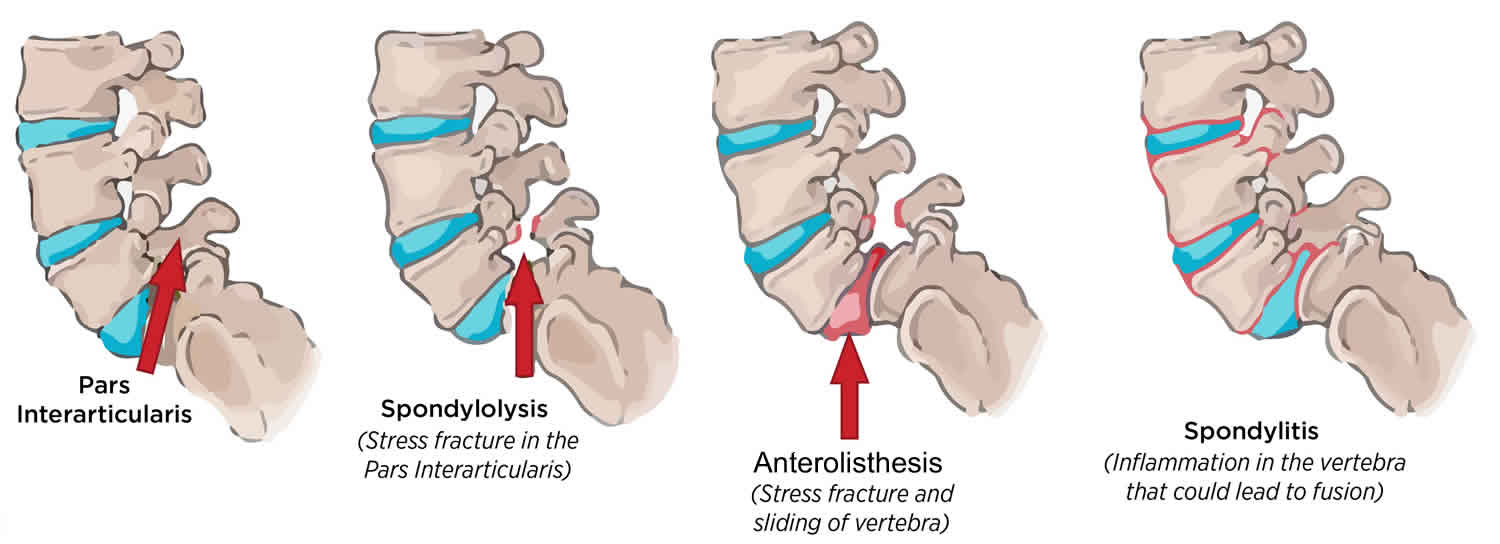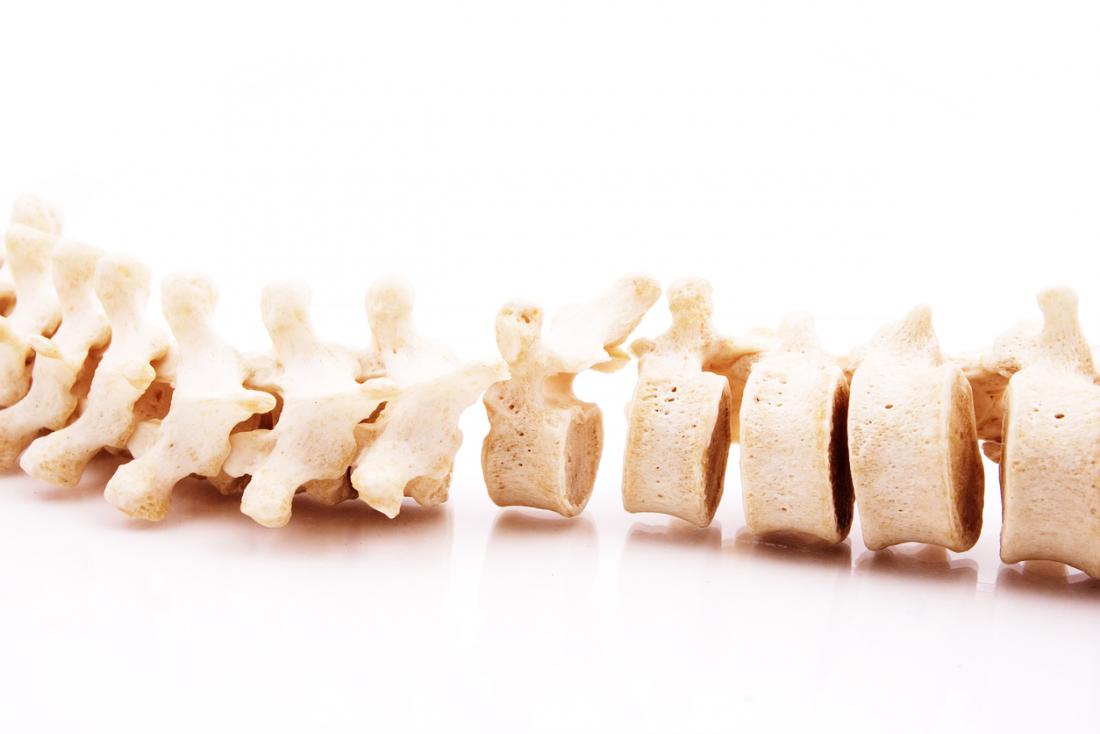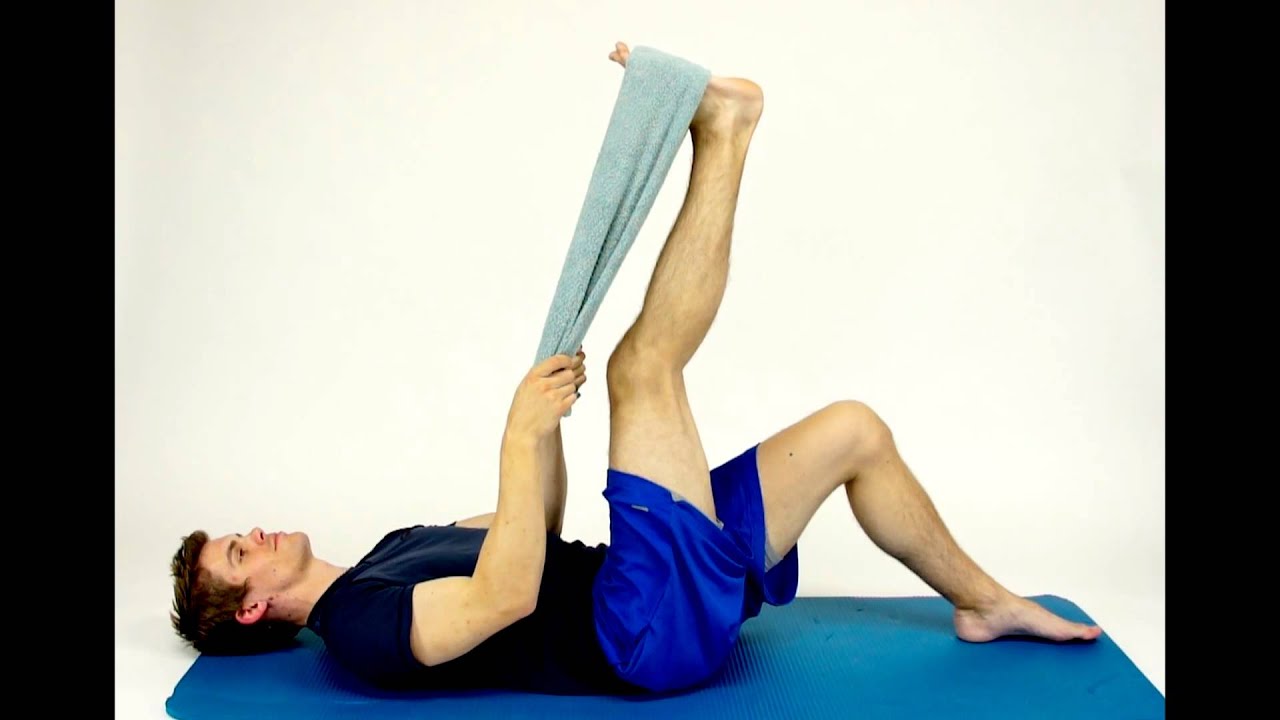Are you suffering from pain in the lower back? Have you recently met with an accident, or under trauma, depending or do heavy exercise for a long time? You might be suffering from Anterolisthesis is a type of spondylolisthesis, which is an abnormal alignment of bones in the spine mainly affecting the lower back.
Trauma or accident might cause slipping of the upper vertebra in front of the one below leading to pain. Pain in the lower back or lower lumbar spine is usually the initial symptom of anterolisthesis. Anterolisthesis can also occur in the cervical spine and rarely, in the thoracic spine.
The nerves can get pinched due to misaligned vertebrae, and this can have painful and debilitating consequences. Other parts of the body, such as the arms or the legs, can also be affected by anterolisthesis.
The degree of slippage is graded on a scale from mild to severe. Your doctor would initially treat anterolisthesis with complete bed rest. But, if the condition does not improve or worsens, the doctor would recommend surgery.

CAUSE OF ANTEROLISTHESIS
The spinal column supports your body weight, allows movement, and protects the fragile spinal cord. The spinal column consists of 33 individual vertebrae stacked upon one another. There is a strong network of nerves around the spinal column that helps in the transfer of information. There is enough space between each vertebra to allow nerves to exit the spinal column and innervate other areas of the body. Anterolisthesis occurs when the vertebra body, which is a thick drum-shaped area in the front of the vertebra, slips down onto the bone beneath. The vertebra slippage is graded on a scale of 1 – 4. A severe case is graded as 4 and 1 is for mild pain.
Anterolisthesis can occur anywhere in the body but usually transpires in the lumbar region typically between the 4th and 5th lumbar vertebrae.
Various factors lead to misalignment of the vertebrae. If the vertebrae move in front of the one below causes anterolisthesis. This leads to the nerves being pinched causing pain. Some of the key factors include:
- Sudden blunt force or fractures: These results from trauma typically experienced in an auto accident or a fall.
- Strenuous exercise: Physical exercise such as weight lifting, gymnastics, or bodybuilding can lead to the development of anterolisthesis over time.
- Aging: This is another common cause of anterolisthesis. The cartilage between the vertebrae weakens and thins naturally over time leading to the slippage of vertebrae in front. Elderly people are prone to developing anterolisthesis due to degenerative changes or conditions such as arthritis affecting the alignment of the spinal column.
- Underlying medical condition: Anterolisthesis could develop due to underlying conditions such as weak bones, arthritis, osteoporosis, bone fractures, sudden injury, or tumors. A tumor can force the vertebra to move from its natural position.
- Genetic mutation: Anterolisthesis, rarely could be linked to a genetic spinal growth defect in children by birth or due to bone deficiency.
- Idiopathic cause: There might not be any cause behind slippage of vertebrae forward.

SYMPTOMS OF ANTEROLISTHESIS
The symptoms would depend on the amount of slippage and the part of the spine where the slippage occurred.
Anterolisthesis leads to nerves getting pinched leading to constant and severe localized pain, or it can develop and worsen over time. Pain in the affected area is the initial symptom that may be persistent and affects the lower back radiating to the legs. Lower back pain felt at the affected area, or radiating to other areas of the back is the most common complaint.
Pain affects mobility leading to inactivity and gradual weight gain. The slippage of the vertebrae eventually results in loss of bone density and muscle strength. Anterolisthesis also affects the flexibility in other areas of the body.
The degree and intensity of the pain experienced in the lower back depends on the slippage of vertebrae that results in nerve compression.
Nerve compression may cause varying symptoms depending on where it occurs, ranging in severity from mild to severely debilitating pain.
Other symptoms of anterolisthesis include:
- Muscle spasms
- Pulsating or tingling sensations
- Inability to feel hot or cold sensations
- Pain and poor posture
- Weakness in the leg (sciatica)
- Low back and buttocks pain
- Increased sway back or a limp
- Muscle tightness or spasms, in the back of your thighs
- In severe cases, the following symptoms may occur:
- Difficulty walking and limited body movement
- Loss of bladder or bowel function

DIAGNOSIS OF ANTEROLISTHESIS
The doctor usually performs a physical examination to diagnose anterolisthesis. They may order an X-ray of your lower back to see the position of the affected vertebrae. Other imaging tests, such as a CT (computed tomography) scan or MRI (magnetic resonance imaging) scan, might also be required. These imaging techniques help to determine bone defects as well as evaluate injuries and nerve damage.
After confirming anterolisthesis it is important to establish the extent of the damage by grading. The grading scale is used to determine the severity of the condition. The doctor would determine the treatment regime on basis of severity of the condition or grade such as:
- Grade 1: less than 25% slippage
- Grade 2: 26 to 50% slippage
- Grade 3: 51 to 75% slippage
- Grade 4: 76% or more slippage
Grade 1 and 2 are mild with mild to moderate symptoms. Whereas, grade 3 and 4 are severe.100% slippage occurs in rare cases when the upper vertebra completely slips off the one below.

TREATMENT OF ANTEROLISTHESIS
The treatment plan is devised by the doctor on basis of the grade of slippage. The symptoms are mild if you are suffering from grade 1 and 2 slippages. The treatment plan aims to alleviate pain and discomfort. But, surgery is required if you are suffering from grade 3 and 4 slippages that are considered severe and may ultimately require surgery. The treatment involves:
- Rest: This helps in overcoming mild symptoms of anterolisthesis. It is required to stop participation in sports and strenuous daily activities until the pain subsides. This would also prevent further slippage or damage to the vertebrae.
- Medication: OTC pain killers and Non-steroidal anti-inflammatory drugs (NSAIDs) are prescribed to treat the pain and inflammation caused by slippage. If the pain is severe doctor may prescribe steroids and opioids. The doctor may also recommend epidural steroids injection directly into the back to reduce inflammation and ease the pain.
- Exercise: Along with physical therapy exercise can increase pain-free movement, improve flexibility, and build strength in the back muscles. Stabilization exercises help in maintaining mobility of the spine, strengthen the abdominal and back muscles, and reduce painful movement of the bones in the affected spine.
- Surgery: This is the last option in case of grade 3 and 4 cases, if the vertebra continues to slip or if the pain persists after the above treatments. Surgery involves adjusting the vertebrae with plates, wires, rods, or screws such as:
- Decompression: In this, the bone or other damaged tissue is removed to relieve pressure on the vertebrae and associated nerves.
- Spinal fusion: This involves a piece of bone being transplanted into the back of the spine. The bone heals and fuses with the spine creating a solid bone mass. This helps stabilize the spine.
OUTLOOK
Anterolisthesis is a complex condition affecting the quality of life. Our expert chiropractors help in treating the pain and associated symptoms of anterolisthesis.
If you or anyone you know is suffering from back pain, our expert providers at Zenith Injury Relief & Wellness Clinic will take care of your health and help you recover.
Call us on 972-210-0033 to book an appointment with our specialists, and begin living your life pain-free.
